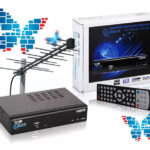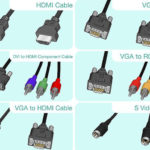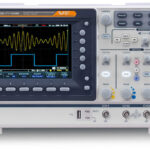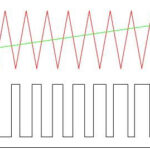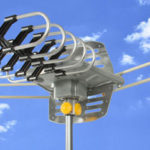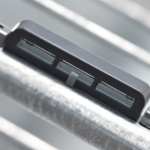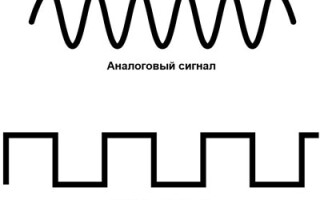Digital television has already covered almost the entire country. New TVs receive a high-quality digital signal on their own, old ones - using a special set-top box. What is the difference between old analog and new digital signal? Many people do not understand this and need clarification.
Content
Signal types
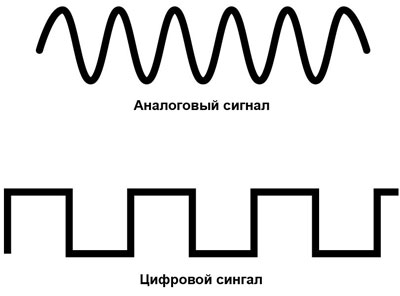
A signal is a change in a physical quantity in time and space. In fact, these are codes for data exchange in information and management environments. Graphically, any signal can be represented as a function. You can determine the type and characteristics of the signal from the line on the graph. Analog will look like a continuous curve, digital like a broken rectangular line jumping from zero to one.Everything we see with our eyes and hear with our ears comes as an analog signal.
analog signal
Sight, hearing, taste, smell and tactile sensations come to us in the form of an analog signal. The brain commands the organs and receives information from them in an analog form. In nature, all information is transmitted only in this way.
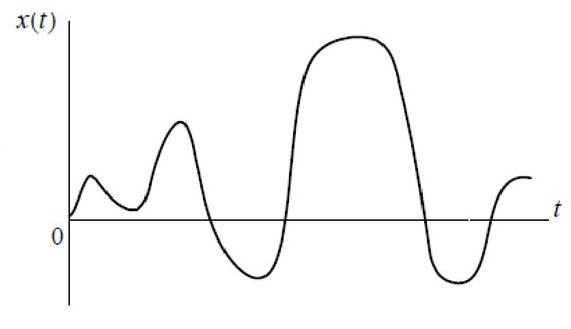
In electronics, an analog signal is based on the transmission of electricity. Certain voltage values correspond to the frequency and amplitude of the sound, the color and brightness of the light in the image, and so on. That is, color, sound or information is analogous to electrical voltage.
For example: Set the color transmission to a certain voltage blue 2 V, red 3 V, green 4 V. By changing the voltage, we will get a picture of the corresponding color on the screen.
In this case, it does not matter if the signal goes through wires or radio. The transmitter continuously sends, and the receiver processes the analog type of information. By receiving a continuous electrical signal through wires or a radio signal over the air, the receiver converts the voltage into the corresponding sound or color. An image appears on the screen or sound is broadcast through the speaker.
discrete signal
The whole point lies in the name. Discrete from Latin discretus, which means discontinuous (divided). We can say that the discrete repeats the amplitude of the analog, but the smooth curve turns into a stepped one. Varying either in time, remaining continuous in magnitude, or in level, without interruption in time.
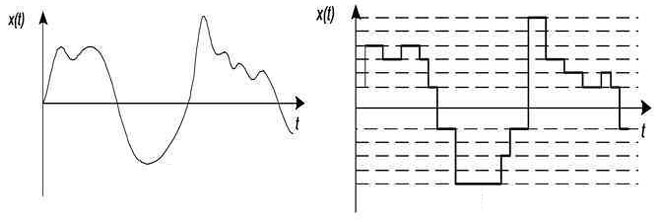
So, in a certain period of time (for example, a millisecond or a second), a discrete signal will be of some set value. At the end of this time, it will change sharply up or down and remain so for another millisecond or second. And so continuously.Therefore, discrete is converted analog. That is halfway to digital.
digital signal
After discrete, the next step in analog conversion was a digital signal. The main feature is either he is, or he is not. All information is converted into signals limited in time and magnitude. Signals of digital data transmission technology are encoded with zero and one in different versions. And the basis is a bit that takes one of these values. Bit from English binarydigit or binary digit.
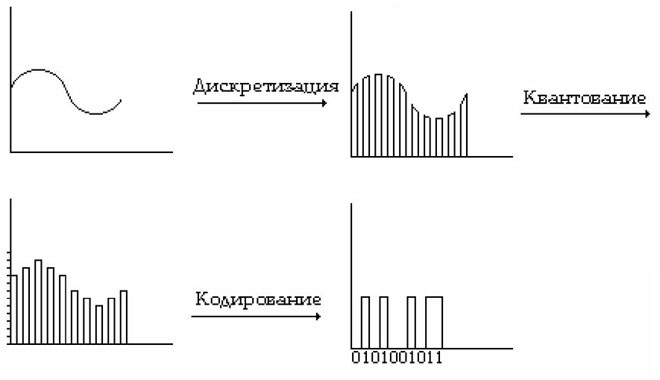
But one bit has a limited ability to transmit information, so they were combined into blocks. The more bits in one block, the more information it carries. In digital technologies, bits are used in blocks that are multiples of 8. An eight-bit block is called a byte. One byte is a small amount, but it can already store encrypted information about all the letters of the alphabet. However, adding just one bit doubles the number of combinations of zero and one. And if 8 bits makes 256 encoding options possible, then 16 is already 65536. And a kilobyte or 1024 bytes is a rather big value.
ATTENTION! There is no error that 1 KB is equal to 1024 bytes. This is the custom in a binary computing environment. But the decimal system is widely used in the world, where kilo is 1000. Therefore, there is also a decimal kB equal to 1000 bytes.
A lot of information is stored in a large number of combined bytes, the more combinations of 1 and 0, the more is encoded. Therefore, in 5 - 10 MB (5000 - 10000 kB) we have good quality music track data. We go further, and the film is already encoded in 1000 MB.
But since all the information surrounding people is analog, it takes effort and some kind of device to bring it into digital form. For these purposes, a DSP (digital signal processor) or DSP (digital signal processor) was created. Such a processor is in every digital device. The first appeared in the 70s of the last century. Methods and algorithms change and improve, but the principle remains constant - the conversion of analog data into digital.

The processing and transmission of a digital signal depends on the characteristics of the processor - bit depth and speed. The higher they are, the better the signal will be. The speed is indicated in millions of instructions per second (MIPS), and for good processors it reaches several tens of MIPS. The speed determines how many ones and zeros the device can "shove" in one second and qualitatively transmit a continuous analog signal curve. The realism of the picture depends on this. TV and sound from the speakers.
The difference between a discrete signal and a digital one
Everyone has probably heard about Morse code. The artist Samuel Morse came up with it, other innovators improved it, but used everything. This is a way of transmitting text, where letters are encoded with dots and dashes. Simplistically, the encoding is called Morse code. It was used for a long time on the telegraph and for transmitting information by radio. In addition, you can signal with a spotlight or flashlight.
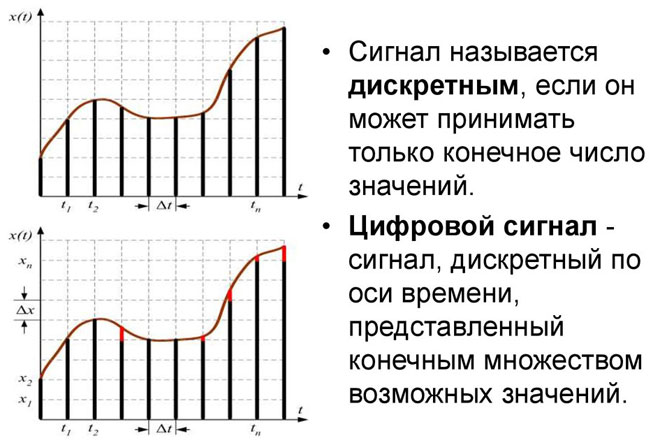
Morse code depends only on the character itself. And not from its duration or loudness (strength). No matter how you strike with the key (blink with a flashlight), only two options are perceived - a dot and a dash. You can only increase the transfer speed. Neither volume nor duration are taken into account. The main thing is that the signal would reach.
So is the digital signal. It is important to encode the data using 0 and 1. The receiver only has to parse the combination of zeros and ones. It does not matter how loud and how long each signal will be. It is important to get zeros and ones. This is the essence of digital technology.
A discrete signal will be obtained if we also encode the volume (brightness) and the duration of each dot and dash, or 0 and 1. In this case, there are more encoding options, but also confusion. Volume and duration can not be disassembled. This is the difference between digital and discrete signals. Digital is generated and perceived unambiguously, discrete with variations.
Comparison of digital and analog signals
The signal of the radio station of the television center or mobile communication can be transmitted in digital and analog form. For example, sound and image are analog signals. The microphone and the camera perceive the surrounding reality and convert it into electromagnetic waves. The oscillation frequency at the output depends on the frequency of sound and light, and the transmission amplitude depends on the volume and brightness.
The image and sound converted into electromagnetic oscillations propagate into space by a transmitting antenna. In the receiver, the reverse process takes place - electromagnetic oscillations into sound and video.
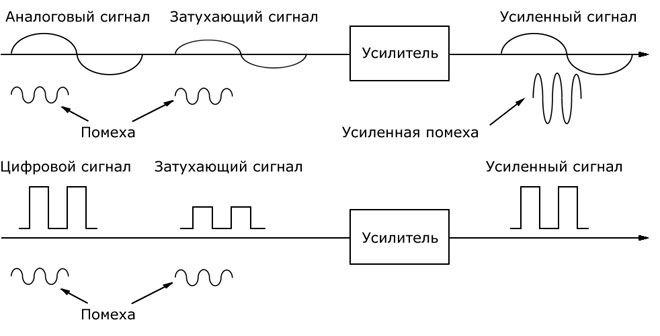
The propagation of electromagnetic oscillations in the air is prevented by clouds, thunderstorms, terrain, industrial electric pickups, solar wind and other interference. The frequency and amplitude are often distorted and the signal from the transmitter to the receiver comes with changes.
The voice and picture of the analog signal are distorted due to interference, and hiss, crackles, and color distortion are reproduced in the background.The worse the reception, the more distinct these extraneous effects. But if the signal has reached, it is at least somehow visible and audible.
In digital transmission, the image and sound are digitized before broadcasting and reach the receiver without distortion. The influence of extraneous factors is minimal. Sound and color of good quality or none at all. The signal is guaranteed to arrive at a certain distance. But for long-distance transmission, a number of repeaters are needed. Therefore, to transmit a cellular signal, the antennas are placed as close to each other as possible.
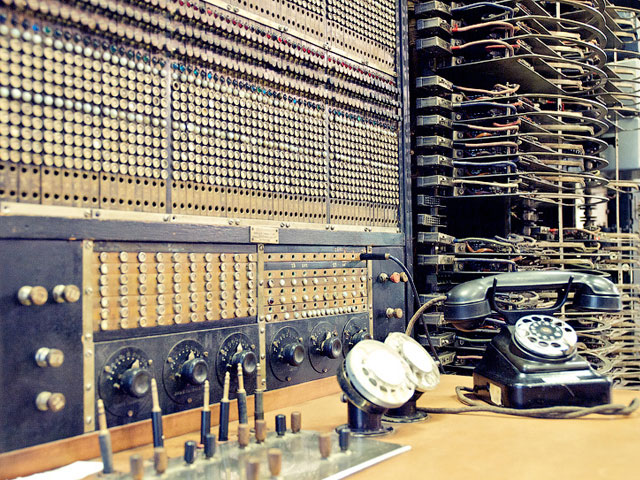
A clear example of the difference between the two types of signals is the comparison of the old wired telephone and modern cellular communications.
Wired telephony does not always work well even within the same locality. A call to the other side of the country is a test of the vocal cords and hearing. You need to shout and listen to the answer. We filter out noise and interference with our ears, we think out the missing and distorted words ourselves. Although the sound is bad, but there is.
The sound in a cellular connection is perfectly audible even from the other hemisphere. The digitized signal is transmitted and received without distortion. But he is not without flaws either. If failures occur, then the sound is not heard at all. Drop out letters, words and whole phrases. It's good that this rarely happens.
Roughly the same with analog and digital television. Analog uses a signal that is subject to interference, of limited quality and has already exhausted its development possibilities. Digital is not distorted, provides excellent sound and video quality, and is constantly being improved.
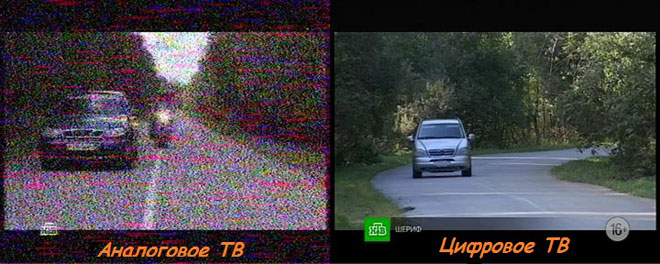
Advantages and disadvantages of different types of signals
Since the invention, analog signal transmission has been greatly improved. And served for a long time transmitting information, sound and image. Despite many improvements, it has retained all its shortcomings - noise during playback and distortion in the transmission of information. But the main argument for switching to another data exchange system was the ceiling of the quality of the transmitted signal. Analog cannot accommodate the amount of modern data.
Improvements in recording and storage methods, primarily video content, have left the analog signal in the past. The only advantage of analog data processing so far is the widespread and low cost of devices. In all other respects, the analog signal is inferior to the digital signal.
Examples of digital and analog signal transmission
Digital technologies are gradually replacing analog ones and are already widely used in all spheres of life. Often we just do not notice it, and the figure is everywhere.
Computer Engineering
The first analog computers were created in the 1930s. These were rather primitive devices for performing highly specialized tasks. Analog computers appeared in the 1940s and were widely used in the 1960s.
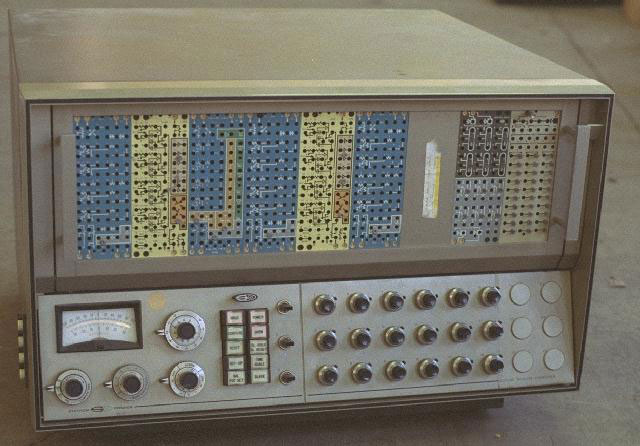
They were constantly improving, but with the growth of the volume of processed information, they gradually gave way to digital devices. Analog computers are well suited for automatic control of production processes, due to the instant response to changes in incoming data. But the speed of work is low and the amount of data is limited. Therefore, analog signals are used only in some local networks.Basically it is the control and management of production processes. Where the initial information is temperature, humidity, pressure, wind speed and similar data.
In some cases, the help of analog computers is resorted to in solving problems where the accuracy of the data exchange of calculations is not important as for digital electronic computers.
At the beginning of the 21st century, the analog signal gave way to digital technology. In computing, mixed digital and analog signals are used only for data processing based on some microcircuits.
Sound recording and telephony
Vinyl record and magnetic tape are two prominent representatives of the analog signal for sound reproduction. Both are still produced and are in demand by some connoisseurs. Many musicians believe that only by recording an album on tape can one achieve a juicy real sound. Music lovers like to listen to discs with characteristic noises and crackles. Since 1972, tape recorders have been produced that perform digital recording on magnetic tape, but they have not received distribution due to the high cost and large dimensions. For use in professional recording only.
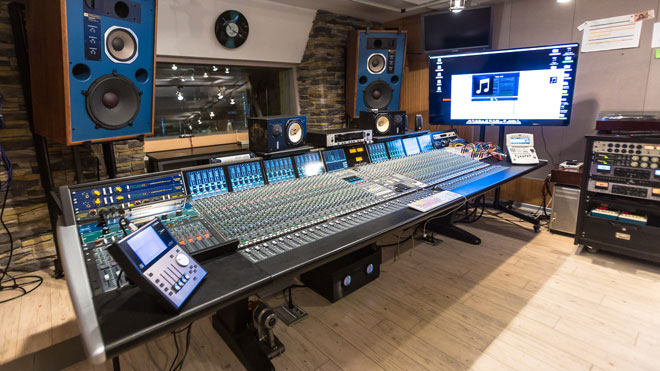
Another example of analog and digital signals in sound recording is mixers and sound synthesizers. Mostly digital devices are used, and the use of analog devices is caused by habits and prejudices. It is believed that digital recording has not yet achieved that effect of an all-encompassing transfer of music. And it is inherent only to the analog signal.
Whereas young people cannot imagine music without MP3 files stored in the memory of phones, flash drives and computers.And online services provide access to their repositories with millions of digital records.
Telephony has gone even further. Digital cellular communication has almost supplanted wired communication. The latter remained in state bodies, health care institutions and similar organizations. Most no longer imagine life without a cell and how to be tied to a wire. Cellular communications, the basis of data transmission in which a digital signal reliably connects subscribers around the world.

Electrical measurements
Digital processing and data transmission is firmly established in electrical measurements. Electronic oscilloscopes, volt and ammeters, multi-measuring instruments. All devices that display information on an electronic display use a digital signal to transmit the measurement. In everyday life, you can most often encounter this at the sight of stabilizers and voltage relays. Both devices measure the voltage in the network, process and transmit a digital signal to the display.
Increasingly, digital technology is also being used to transmit electrical measurement data over long distances. To control the performance of electrical networks at substations and dispatcher control panels, digital equipment is installed. Analog devices are popular only in panels, directly at the measurement points.
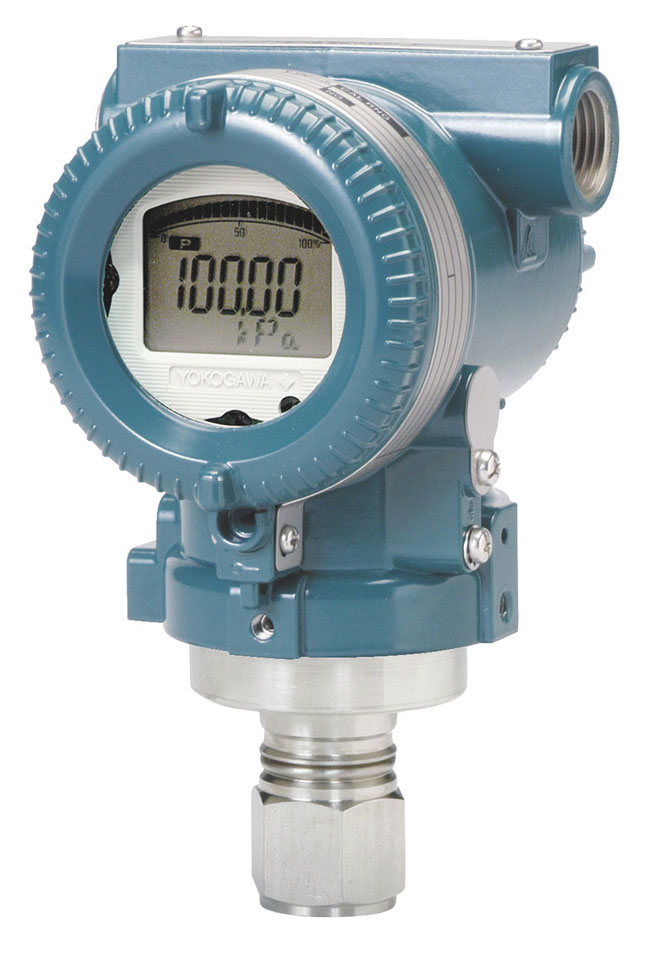
Another widespread use of a digital signal is electricity metering. Residents often forget view instrument readings and enter them into your personal account or transfer them to the energy supply organization. Digital energy metering systems save you from worries. Indications immediately fall into the accounting system. Therefore, there is no need for constant communication between the subscriber and the supplier, you can sometimes go to your personal account and verify the data.
Analogue and digital television
Humanity has lived with analog television for many years. Everyone is used to simple and understandable things. First broadcast, then cable a little better quality. simple antenna, TV and picture of mediocre quality. But video recording and storage technologies have gone far ahead of the analog signal. And he can no longer fully convey a modern film or TV show. Quality, stability and a good signal level can only be provided by digital television.
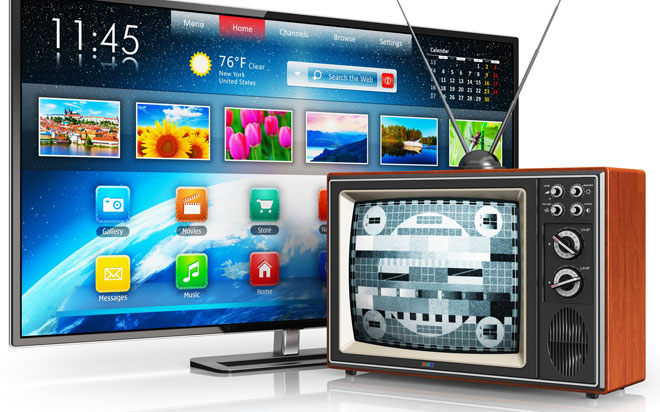
Digital television has many advantages. The first and very large one is signal compression. As a result, the number of channels viewed has increased. The quality of video and sound transmission has also improved; without this, broadcasting for modern large-screen TVs is simply impossible. Along with this, it became possible to show information about the broadcast, the next TV programs, and the like.
Along with the benefits came a small problem. To receive a digital signal, you need a special tuner.
Features of terrestrial television
To receive an on-air digital signal, a T2 tuner is required, other names are a receiver, decoder or DVB-T2 set-top box. Most modern LED TVs are initially equipped with such devices. Therefore, their owners have nothing to worry about. When you turn off analog television, you only need to reconfigure the channels.
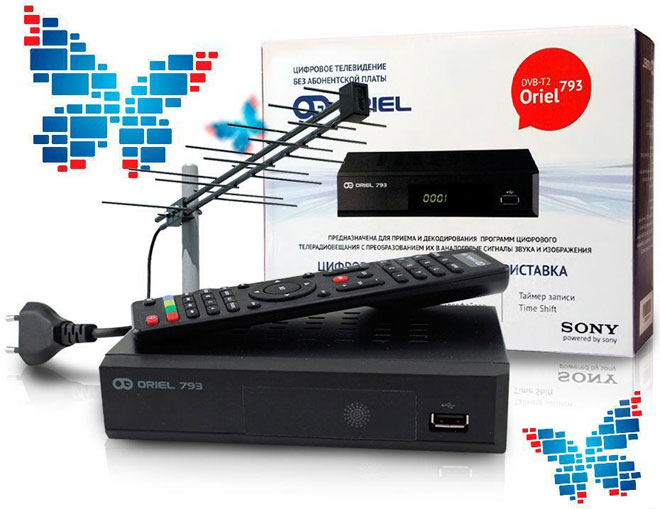
There are no problems for owners of old TVs without a built-in T2 tuner. Everything is simple here. You need to buy a separate DVB-T2 set-top box, which will receive the T2 signal, process it and transfer the finished picture to the screen. Attachment can be easily connect to any TV.
The digital signal is used in more and more areas of life. Television is no exception. Do not be afraid of the new. Most TVs are already equipped with the necessary, and for older ones you need to purchase an inexpensive set-top box. Moreover, it is easy to set up the device. Better picture and sound quality.
Similar articles:
